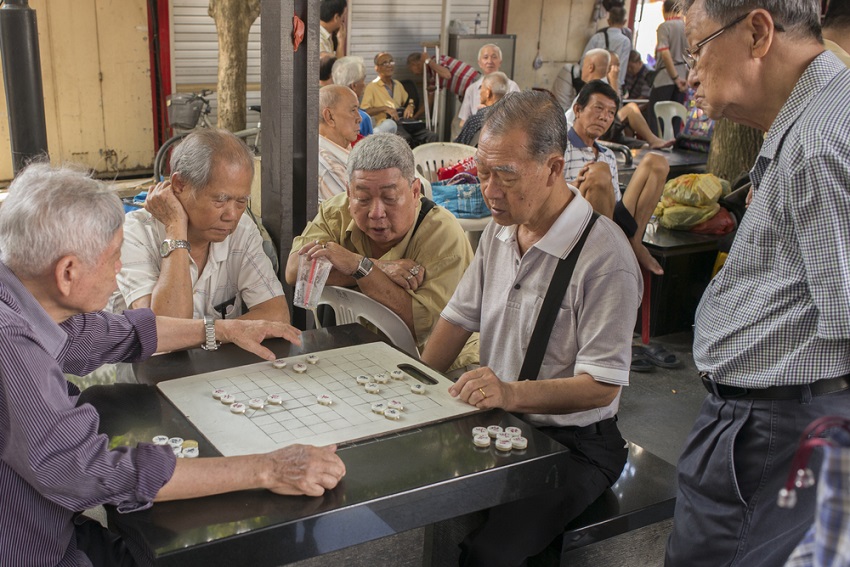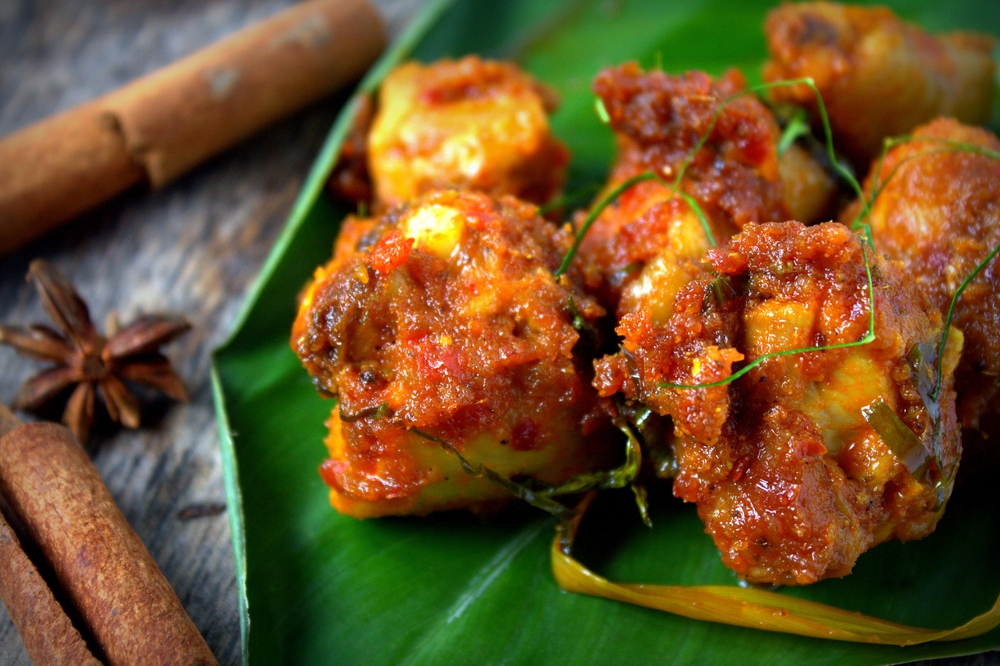Singapore - ethnicity
Many societies in Southeast Asian countries were originated from multiculturalism in which the diversities of races, ethnicities, beliefs, religions, traditions including different ways of life and bonds of the past altogether create what is called ‘a nation’.
The term ‘ethnic’ is an adjective referring to races and nations as well as describing racial, cultural, religious characteristics including languages shared among the nations. When this term had come into existence in English language, its meaning merely referred to ‘foreigner’ especially the foreigners who happened to be Gentile. The function was to segregate those who were unorthodox. However, Compact Oxford Dictionary provides a description of ’Ethnic‘ that its root is Ethnikos, a Greek word, referring to unorthodox people. What seems contradictory is the fact that this term is a Greek adjective describing an explicit meaning of a state of being national. As the term ‘ethnic’ or other relevant terms had been spoken in English, their meanings bore a sense of foreigner and unorthodox. The Oxford Dictionary further explains the second meaning, which is more well-known, that since the 19th century, the meaning referring to unorthodox people has started fading away. Many attempts have been made to define and finally given the meaning referring to races as ‘ethnic’. (สุเทพ สุนทรเภสัช, 2548, หน้า 15-16)
Thai authors and intellectuals started falling under the influence of Ethnic Studies initiated by Western intellectuals as it became evident in the 1950’s when the terms ‘race/ethnicity’ and ‘nation’ appeared in books like ‘Thai History’ and ‘Ethnicity Language and Culture’ by Anuman Rajdhon and ’30 ethnic groups in Chiang Rai’ by Boonchuay Srisawadi. At the present, Thai anthropologist intellectuals prefer other terms referring to ‘ethnicity’ over the ‘ethnicity’ itself, such as ‘ethnic’, to signify human relations whether they are interrelations between the ethnic groups, the relations with nation-states or with the globalization trends. (ประสิทธิ์ สีปรีชา, 2557, p. 221)
Singapore who boasts a diversity of its ethnicities has been an interesting example of immigrant society in Southeast Asia. Being a capital port, this society welcomes different groups of people whose initial prospect was to trade. The Peranakan and Chinese, for instance, assumed a role of an entrepreneur or a merchant trading for native and western traders. The Chinese and Indian flooding Singapore in the mid-19th century were considered pioneers taking up a journey to Singapore and Malay Peninsula in hopes to find a job. (อภิวันท์ อดุลยพิเชฏฐ์, 2556, หน้า 120)
To study a multicultural society in Singapore, we need to place an emphasis on these four different ethnic groups.
- Chinese ethnic group
Professor Wang Gung Wu specializing in Overseas Chinese History of National University of Singapore suggested that there are three groups of Chinese immigrating to Singapore at different periods of time.
The first group is the Chinese residing in the colonies of Great Britain and Holland or the western-occupied areas such as Penang, Malacca, Borneo and Sumatra before Britain established a trading station in Singapore in 1819. Therefore, this group of Chinese had been very well-acquainted with the rule of laws, customs and trading policies of the European.
The second group is the Chinese traveling to trade in Southeast Asia before 1819. The western customs were no strangers to them, so they could easily adjust to the Britain-ruled Singapore. The first and the second groups of Chinese have been known as “Straits Chinese or Straits-Born Chinese” since they were either born or lived in Straights Settlement in which most of them married Malay women (found in both Malay Peninsula and East Indies of Holland). The children born out of such interracial marriage are called ‘Baba’ or ‘Baba Chinese’, and later ‘Straits Chinese’ and ‘Baba’ attribute to the same meaning referring to a group of Chinese born in Straights Settlement to interracial parents of Chinese-Malay descendants.
The third group is the Chinese immigrating to Southeast Asia for the first time after Great Britain established its trading station in Singapore in 1819.
The new immigrants were called ‘Sinkhek’ or Newcomers referring to those who were not born in the Straights Settlement. They had emigrated from the southern part of China since, at that time, the Chinese government allowed some certain port capital cities in the South to contact and trade with foreigners. Before 1860, Guangzhou in Guangdong Province had been the only port for the foreigners, and later 24th October 1860, the Chinese government decided to open more 5 ports: Guangdong, Shanghai, Fujian, Ningbo and Amoy according to Convention of Peking. Moreover, the government allowed the Chinese to work overseas.
As a result, Chinese labor agencies in Singapore like Boustead, Guthrie and Jaradine Matheson were established. These agencies had their local agents in China hunting for labors, and their payment was calculated by a number of labors they recruited. The Chinese immigrants relied on a Credit-Ticket Passenger system in which they owed their travelling debts. The bosses or captains of the vessels would collect the debts at the destination from the labors’ relatives or the employers. The immigrants needed to work until their debts were paid off. However, it was much darker for Chinese women immigrating to work as prostitutes, servants and girl slaves sold to owners.
A large number of Chinese from different areas in China immigrated to Singapore. In 1824, Singaporean population had shown at 3,317 before rising to 10,767 in 1834. The Chinese in Singapore are Hokkien, Teochew, Cantonese, Hainanese, Hakka and Hochia.
Hokkien was a dominant group of Chinese in Singapore. In 1881, Hokkien took up 29% of Chinese population followed by Teochew at 26%, Cantonese at 17.1 %, Straights and Baba Chinese at 11%, Hainanese at 9.5%, Hakka at 7.1% and others at 0.3%. It wasn’t until 1911 when the Hochia immigrated to Singapore.
The diversity in Chinese ethnic groups brings about different backgrounds, languages, careers and social establishments of their own.
1.1 The Hokkien Chinese is a group of native Chinese living in Amoy located in the south of Fujian. They are known as ‘Amoyese’ considered the dominant Chinese group in Singapore. In general, the Hokkien Chinese are well-off working as middleman merchants between the European and the native or capitalists investing in latex industry and bankers. The Hokkien had built a Chinese temple in 1839 to hold their own social activities. Later in 1860 Hokkien Huay Kuan or Hokkien Association was established to support the Hokkien in every possible aspect such as housing, career, healthcare and funeral.
1.2 The Teochaw Chinese is a group of native Chinese living in Swatow, Guangdong. They are called the ‘Swatow’ considered pioneers in Catechu and pepper farming in Singapore. Though their business expansion is not as big as the Hokkien’s, they have managed to monopolize rice trading, porcelain, glassware and textile industry. Moreover, they are leaders in agricultural manufacturing like the industries of ducks, chickens, fish, vegetables, fruits including latex exports and canned pineapples. The Teochaw have heavily relied on Teochew Ngee Ann Kongsi or the Teochaw Association established to financially and socially support the Teochaw in every possible aspect such as education, medical cares, social security, religious festivals and funeral.
1.3 The Cantonese Chinese is a group of native Chinese living in Guangzhou, Guangdong Province. Most of them are skilled craftsmen and labors such as launders, dressmakers, watchmakers, goldsmith and jewelers. The Cantonese established their first association ’Ning Yang Association’ in 1822.
1.4 The Hainanese Chinese is a group of native Chinese living in Hainan located on the South of China. Most of them work in service business such as coffee shops and restaurants including unskilled labors and housemaids. During the colonial time, the Hainanese never considered to settle in in Singapore because most of those immigrated there were men who would not marry the natives. Therefore, any Hainanese association has not yet established.
1.5 The Hakka Chinese is a group of Chinese emigrants from the northern part of China moving to Fujian and Guangdong. Most of them work as skilled craftsmen and labors like iron traders and blacksmiths. In 1823, the Hakka established ‘Ying Ho Association’ so that they could socialize during their festivals and support each other.
1.6 The Hochia Chinese is a group of native Chinese living in the northern part of Fujian. Most of them worked as rickshaw men. When transportation had become more advanced, some of the Hochia turned to work as taxi drivers or drivers. Some started selling bicycles and auto parts. This group has lower average income, so they have not established their own association yet.
1.7 The Straights Chinese/ Peranakan/ Baba are a group of Chinese born in the Straights Settlement and to Chinese fathers and Malay mothers. In general, it can be found that the Straights Chinese and Baba do business and are wealthy. Unlike the newcomer Chinese, they have very different ways of life such as languages, costumes and food that is a mixture of Chinese, Malay and western food. They prefer having western education, enjoying European sports and adopting Christianity as their religion. Their community is known as ‘Westernized Community’ in which the Straights Chinese and Baba established their own association not allowing non-Straights Chinese to join.
Groups of Chinese in Singapore maintain a considerable diversity as explicitly seen in different forms of dialects, careers and ways of life. Also, associations of each dialect groups were established.
- Malay ethnic group
The Malay in Singapore mostly emigrated from local areas in Malay Peninsula and nearby regions. It can be categorized into 2 groups as follows.
The first group is the Malay originally dwelling in Singapore and Malay Peninsula. They are the dominant group of Malay in Singapore.
The second group is the Malay-Indonesians emigrating from East Indies under the Dutch rule at that time. They are Javanese living in Java Island, the Dayak, the Bunja, the Bojan on Borneo Island, the Balinese on Bali Island, the Buginese on Sulawesi Island, the Batak and the Aceh on Sumatra Island.
The Malay mass immigration intent to pursue a better opportunity at finding a job. Moreover, some of them even travelled to Singapore for a ship journey to Mecca. They might have to spend the rest of their lives in Singapore just to collect the travelling money or work to pay off the debts after getting back from Mecca.
Islam deeply bonds the Malay societies in Singapore. It is not only a religious doctrine, but also a custom one needs to follow as an Islamic life and spiritual guidance. However, the Malay society has been recognized as two separate entities: those living in Singapore and the Malay Peninsula and those emigrating from the Dutch’s East Indies or ‘the Indonesian’ in the present day.
Both groups have different careers and status quos. Though the Malay originally settling in Singapore were fishermen, the Malay in Singapore and the Malay Peninsula seemed to have better jobs than the Malay emigrating from the Dutch’s East Indies did. They are government officials such as clergymen, lower-ranking police and soldiers while the other Malay are unskilled labors and latex farmers except the Javanese and the Buginese who set up their own trading business.
The Javiperkan, another Malay ethnic group, are mixed-race people whose fathers are Muslim-Indian and mothers are native Malay including the Malay from the Philippines. They are the smallest group of the Malays and the latest immigrants.
- The Indian ethnic group
The Indians in Singapore are varied according to their tribes, languages and religions.
3.1 The Muslim is a group of Islamic Indian emigrating from the southern part of India near Coromandel Coast. They are Tulikans, Nanaks and Mamaks. On Malabar Coast, residing groups of people are Malayalees or the Kakaks knows as ‘Moplah’. The mass immigration of the Indians took place during 1824-1860.
3.2 The Hindu is a group of Hindu Indian emigrating from Hindustan and Baikal.
3.3 The Parsi is a group of Zoroastrianist Indian. They are wealthy businessmen who started immigrating to Singapore in 1871 making 86.80% which made them be the dominant group of Indians in Singapore until now.
3.4 The Indian in Myanmar is a group of emigrants travelling from Myanmar after Britain started expanding its power there in 1871. They are the smallest group making up 0.24%.
The first group of Indian immigrants in Singapore was the prisoners. After Britain and Holland had signed a treaty in 1824, the Indian prisoners living in Bencoolen started moving to Singapore so that they could work to serve their time in prison from 1825 to 1873. They constructed public utilities such as clearing forest areas, constructing roads and bridges, building churches and governmental offices. When these prisoners successfully repaid their obligations, some of them moved back to Indian. However, most of them decided to live in Singapore.
In 1860, Singapore saw the twice-increasing number of Indian population marking 12,973 people during the last decade. Due to significant changes in the British-ruling policy in India after the Sepoy Mutiny in 1857, the British government took control over Indian Army and forced them to leave the country backing up a claim that they needed to serve Britain’s internal security operations. Therefore, it led to Indian soldiers started moving to Singapore.
The fact that the Indian immigrants were travelled to Singapore in hopes to make fortunes and find better opportunities can be another plausible reason. Most of them were under poverty and indentured labors whose Indian Immigration Agent had prepaid their traveling costs. These Indian labors needed to work and pay off the debts with landing jobs of security guards, launders, tailors, cooks and labors working agricultural sectors, workers at train stations or ports, mercenaries in British Army, lower-ranking police and clergymen in the government offices. The Chuliah, a group of Muslim Indian emigrating from the southern part of India, worked as traders while the loan sharks were knowns as ‘Chettiar’. However, Indian women had a darker side of story to tell. They were abducted to Singapore just to work in brothels.
Mr. A. Mani, whose studies placed an emphasis on a caste system among Indian ethnic groups in Singapore, concluded that the Indian caste system’s developments could be understood by looking at these three different periods of time.
The first period is a decade of 1819-1829 when the Indian caste system had not undergone significant changes. The Hindus strictly followed rules and regulations of each caste to which they had belonged. The zoned residential areas, for instance, were obviously arranged according to the caste system.
The second period started from 1929 to the Second World War. It was considered a turning point of the Indian caste system in Singapore due to the increasing amount of populations there, so it met with difficulties to follow the caste system.
The last period started from the Second World War to present when the caste system has slowly fallen. These days, primarily the Hindus are still strictly following the rules and regulations of the caste system. People belonging to the same caste marry off each other, however, other forms of caste-imposed practices are loosely held. The Outcasts or the Untouchables are allowed to enter the Hindu temples and reside around the nearby neighborhoods.
- Other ethnic groups in Singapore
The dominant ethnic group is the European followed by the Eurasian. Others are the Cochin China, Japanese, Jewish, Siamese, Armenian, Arabic, Middle-East Persian and African.
4.1 The Europeans living in Singapore were not only the British, the colonizer, but also the Portuguese and the Hollander. The Europeans like the missionaries, traders and businessmen started immigrating to Singapore in 1819 as the traders and the businessmen saw a great opportunity to set up their own trading agencies there. They took this place as a warehouse storing goods that were to be shipped from Europe to India, China, Siam or Malaysia.
4.2 The Eurasian is a group of mixed races whose fathers were the Europeans like Portuguese, British and Hollander while the mothers were the native. They had started immigrating to Singapore before the trading station was established in 1819. Most of them emigrated from Penang, Sri Lanka and India, therefore, the Eurasian in Singapore were those Anglo-Indian Eurasian. In general, it can be found that the Eurasian have different career paths such as businessmen, government officials and attorneys. They have largely adopted the western life styles as their names are western-named. They speak English in daily life and identify themselves with Christianity.
4.3 The Jewish is another immigrant group with various occupations travelling from the Middle East, Europe and India. The 9 Jewish pioneers from Baghdad arrived at Singapore in 1830. They spoke Arabic, Semitic and Hindi and wore the Arabic-like attire.
4.4 The Armenian mostly emigrated from Indonesia while some groups emigrated from Kolkata, India.
4.5 The Arab is a group of merchants trading in Southeast Asia for a long time. This group has settled in Kampong Glam just like the Malay in Old Singapore. The Singaporean-Arab groups like Alsagoffs, Aljuneids, Alkaffs Talibs have been known that their ancestors, the Alsagoffs, travelled to trade spices and finally set up a branch in Singapore in 1824. One of them married a daughter of Hajjah Fatimah, a descendant of Sultan of Celibacy. This family has owned numerous properties and steamboats in Singapore. The Alkaffs settled in Singapore in 1852 trading spices and garments.
Another prominent figure from the Aljunieds is Omar Aljunied. He founded the first mosque and the first Muslim cemetery in Singapore. His ancestors could be traced back to the Yemenites in the Middle East. They had been travelling to Southeast Asia for trades since mid-18 century. Their business quarters were set up in Java, Sumatra and Singapore while their business network was established in Java.
The Singaporean society is a plural society in which has diversity in terms of ethnic groups, languages, religions and cultures of the four dominant ethnic groups, Chinese, Malay, Indian and others which caused them to live separately in different residential areas. As it is evident in a journal of a colonial writer (กนิษฐา จานเขื่อง, 2546, pp. 28-42), it records:
A relationship between the ethnic groups ends at 5 p.m. each day when it calls it a day. The Chinese, Malay, Indian and European go back to their residential areas to meet up and hang out with their groups of people.
Bibliography
โคริน เฟื่องเกษม. (2554). สิงคโปร์ภายใต้สามผู้นำ. กรุงเทพฯ: โรงพิมพ์เดือนตุลา จำกัด.
กนิษฐา จานเขื่อง. (2546). นโยบายการเคหะแห่งชาติกับการพัฒนาประเทศสิงคโปร์ (ค.ศ. 1960-2000). กรุงเทพฯ: มหาวิทยาลัยธรรมศาสตร์.
ดวงธิดา ราเมศวร์. (2555). ประวัติศาสตร์ประเทศในกลุ่มอาเซียน (2) เวียดนาม มาเลเซีย อินโดนีเซีย ฟิลิปปินส์ สิงคโปร์ บรูไน. กรุงเทพฯ: แพรธรรม.
ประสิทธิ์ สีปรีชา. (2557). บทความปริทรรศน์ : กระบวนทัศน์การศึกษาชาติพันธุ์สัมพันธ์. สังคมลุ่มน้ำโขง, 221.
พัชรินทร์ สวนฐิตะปัญญา. (2541). มาเลเซีย : เอกภาพกับการศึกษา. กรุงเทพฯ: มูลนิธิโครงการตำราสังคมศาสตร์และมนุษยศาสตร์.
วิทย์ บัณฑิตกุล. (2555). สาธารณรัฐสิงคโปร์. กรุงเทพฯ: สถาพรบุ๊คส์ จำกัด.
สุเทพ สุนทรเภสัช. (2548). ชาติพันธุ์สัมพันธ์. กรุงเทพฯ: เมืองโบราณ.
อภิวันท์ อดุลยพิเชฏฐ์. (2556). ประวัติศาสตร์สิงคโปร์. กรุงเทพฯ: เมืองโบราณ.





